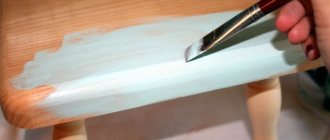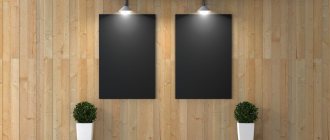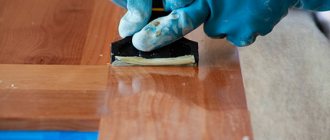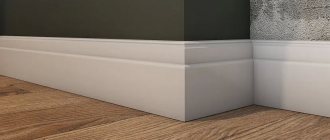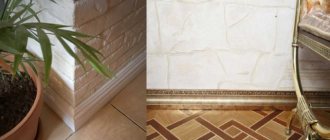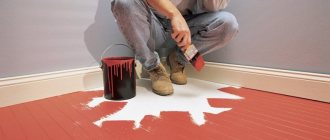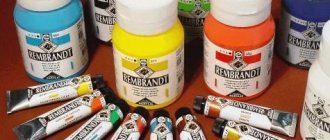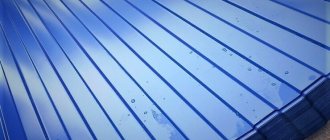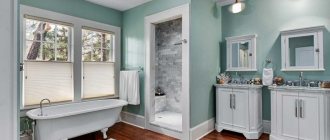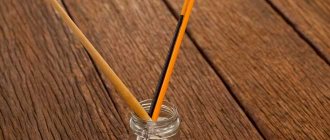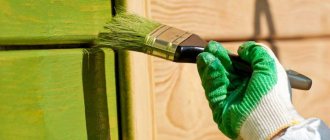This type of material is intended for profile painting of furniture fittings. For the creation of the product, we must give credit to Annie Sloan: it was this girl from Britain who developed the composition of this substance. The paint received this name not only because of it, but also because it makes the wood surface velvety and matte. As a result, the furniture feels like chalk to the touch.
How to choose paint for furniture
It is necessary to take into account the composition of the surface to be coated, the service life and decorative qualities of the item. This will help you avoid mistakes and make the right choice of material.
For children's furniture, you should select acrylic and water-dispersion paints, since from an environmental point of view they are the safest for human health because they do not contain harmful components.
The same goes for kitchen items. The coating will not allow grease and other contaminants to be absorbed into the surface, which will greatly facilitate maintenance.
How to care for painted furniture
Painted furniture facades do not require special care. You need to remember what you absolutely cannot use:
- all types of solvents;
- cleaning products containing abrasives;
- hard sponges.
In order to clean painted furniture from dust and dirt, any foaming detergents, polishes with wax, or products containing alcohol are suitable. The room where painted furniture is located should not be too humid and hot.
You need to care for painted wooden furniture using polish and wax. Restoring furniture with your own hands is not so difficult, the main thing is to approach the process thoroughly. Based on the characteristics of the furniture, where and how it is used and your wishes for the result, it will not be difficult to make a choice of paint. Then, following the recommendations, boldly begin to implement the plan.
Acrylic based paint
Acrylic paints dry quickly, are odorless, non-toxic and fireproof. Due to the presence of such positive characteristics, acrylic-based paints are appreciated by consumers, which makes them quite popular.
When using this material, there is no need to prime the surface; this indicates good adhesion of the paint to the base.
- The paint is white, and this makes it possible to experiment with shades.
- If you choose the right color pigment, you can add a little creativity, diluting the monotony of repair work.
What do we know about chalk paint?
Chalk paint for wood furniture is a combination of water and chalk with the presence of appropriate mineral additives.
Before applying this material there is no need to remove the old coating layer and apply a primer (with the exception of old peeling paint).
Odorless chalk paint for wooden furniture paints the surface in a fairly thick layer, making the item suitable for styling.
Latex based paints
Previously, oil paints were used to coat wooden objects. But due to the strong, persistent odor, it is better to avoid them in favor of a safe latex emulsion.
This type of paint penetrates deeply into the surface, forming a protective layer from moisture, and therefore from further destruction of the object.
But there is one drawback. The product is sensitive to temperature changes, so items and furniture coated with it should not be left outdoors.
Types of paints
The finish for repainting furniture should be safe, practical and beautiful. The material can completely transform facades or add new notes to the existing design. There are 6 types that are used for interior items.
Silicone water emulsion
Paint is made from a color mixture based on water, polymers and dyes. Emulsion particles are dissolved in liquid. After application to the surface, the moisture evaporates, but the pigments with the fixer remain. Finishes containing silicone penetrate well into the upper layers of wood.
Long-lasting paint does not crack or peel, and the color does not fade. The material perfectly allows oxygen to pass through, so painted facades do not swell (do not “bubble”). The resin-based pigment “breathes” but does not absorb moisture. After application, the components dry quickly. Antibacterial additives are often added to the composition to protect the wood from rot and mold.
Silicone paint Source berkem.ru
Silicone water-based emulsion masks minor mechanical damage (up to 2 mm), so the finish is used without sanding or putty. Due to the antistatic properties of the material, dust does not accumulate on painted facades. The raw materials do not have a sharp, chemical smell, which allows them to be used in children's rooms. The only disadvantage of enamel is the high price.
Acrylic
Furniture paint combines the best properties of water-soluble and oil-based types. There are no toxic components in the composition, so the material does not stink and is safe for use indoors. Due to the high level of adhesion to the surface, it fits perfectly. To obtain uniform coloring, 2 layers are sufficient. Drying period – 2-3 hours.
Material option for furniture Source vmirekraski.ru
After the paint has hardened, a thin protective coating appears on the furniture, resistant to mechanical damage and aggressive environmental influences. Due to the absence of flammable components in the composition, the raw material is highly fire resistant. To obtain a uniform layer, the facades are primed before application and cracks are puttied.
Acrylic paint Source kraskidlyamebeli.ru
The elasticity of acrylic protects the surface from cracking and preserves the original appearance of the furniture. The paint is tinted, giving the material the desired color. The compositions are matte and glossy. The facades are easy to care for and can be sanded and repainted. To reduce the thickness of the enamel, use water rather than chemical solvents.
Latex
Practical and easy to use, furniture paint is a water-soluble type. The liquid makes the composition viscous, which makes it easier to apply to the surface. Latex penetrates the upper layers of wood, creating a protective film that protects against moisture. High air permeability will preserve the structure of the facades in their original form. The material is afraid of the cold, so interior items are placed only indoors.
Waterproof coating Source berkem.ru
Cretaceous
Professional compositions allow you to work with surfaces of any neglect. With the help of chalk paints for furniture, it is possible to create a perfectly even matte layer on the facades. To obtain a glossy shine, a finishing (wax) coating is applied on top. The material dries quickly and is suitable for wood, metal and plastic. The only negative is the high price.
Option for old furniture Source livemaster.ru
Water-soluble paints for furniture
Water-dispersible products are loved by consumers for a number of positive qualities, such as:
- Environmental Safety;
- Dries quickly;
- Durable, damage-resistant coating;
- Water resistance of the coated surface;
- Variety of coatings (matte, glossy);
- Possibility of choosing shades.
Transparent paint for furniture
Today the market offers both transparent and colored products, and they are endowed with the following characteristics:
- Help prevent surface fading and pattern fading.
- They have a transparent composition, this helps not to overlap the wood texture and other original ornaments.
- Helps moisture evaporate freely.
Furniture paints and their areas of application
Currently, there are many coloring solutions designed specifically for furniture. It is allowed to apply paint even over an existing old layer, or to make an initial application. However, the main principle of painting furniture products is to achieve the most even application of the paint and varnish coating. As a rule, before painting (but not necessarily), you will need to eliminate defects and uneven surfaces using putty, and then sand and prime it.
Based on what paint and varnish material (paint and varnish) the master chooses, at this level the appearance of the entire household item will change. For example, to paint objects made from fine particle fraction (MDF) at home, it is possible to use nitrocellulose, epoxy or polyurethane paint. These compositions are perfect for both antique and new furniture items. Similarly, the above-mentioned paints and varnishes can be used perfectly for objects made from chipboard, and even for those that have been artificially aged.
The variety of effects that are achieved through the use of paints and varnishes opens up a huge field of possibilities for both the amateur designer and the professional interior artist:
- If you apply colorless varnish in several layers, the object being painted will acquire a natural wood color, slightly yellowish.
- You need to completely change the previous color using a special mixture for chipboard, however, the surface structure itself will not change and will be perfectly visible.
- An increase in the degree of gloss is achieved by applying a colorless varnish to an already painted surface, while the main (previous) color will not change at all. Another popular method is the use of glossy paintwork materials for painting wooden objects with a matte surface. It is this method that contributes to a radical change in the appearance of furniture.
- Depending on the chosen coloring composition, as well as in the process of selecting the applied layers, it is possible to obtain a huge variety of variations of the wood surface. For example, if the tree initially had a colorless appearance, then with the help of an odorless composition it can be given the appearance of a certain species: larch or pine. If you enhance the color scheme, you can get the color of mahogany or mocha. The limit is considered to be obtaining shades of oak, beech or walnut.
Existing varieties
First of all, in the process of searching for paints and varnishes, you should pay attention to the conditions of its future use, and not be guided by your own preferences. The main factor will be the type of surface being processed, because wooden and metal furniture have their own separate paintwork materials. Today, acrylic-based compositions remain the most popular, because their consistency is environmentally friendly. This factor allows the paint to be used in any room. After the liquid evaporates, an elastic film will appear on the painted surface. And this will happen due to the fact that acrylic mixtures include a special polymer that provides high-quality adhesion (adhesion) between the surface and the paint. This is also facilitated by the additional fine-grained polyacrylic dye included in the mixture.
Special ingredients are responsible for the degree of glossiness and matteness. Due to the fact that wood requires special protection, special antibacterial substances are added to the mixture. There are also additives that directly affect the hardening time and thickness of the coloring material.
The undoubted advantage of acrylic material is that it can be easily wiped off. However, this must be done as quickly as possible, before the paint dries. All you need for this is a sponge dipped in warm water.
Mixtures on an acrylic base are almost the only ones that allow moisture to evaporate without allowing it to pass through. Accordingly, it turns out that the furniture can “breathe” freely. At the same time, there is no difference with what frequency the acrylic mixture will be used, because the applied color will remain stable for decades to come. In addition, there is no need to worry about an unpleasant odor after painting - it is either extremely small and disappears quickly, or some samples of acrylic compositions do not have it at all. And this circumstance suggests that acrylic can be painted even in an unventilated room.
Among others, mention should also be made of other types of coatings:
- Watercolor and gouache - they are unlikely to be suitable for protected painting, but they can be used to decorate furniture. It will be better if the background for their use is a layer of another, more stable material. Their main disadvantages include the fact that they are extremely unstable to water and quickly fade in the sun. However, their price is so low that you can safely experiment with them. In any case, after they have dried, the created pattern can be covered with a layer of colorless paint and varnish, thereby securing the applied decor.
- Enamels based on organic solvents - in principle, it is even possible to combine them into a special group. This includes all oil paints that are currently considered obsolete. Their service life is no more than three to five years, but at the same time they give the surface a high-quality gloss.
- Automotive enamel (paint in aerosol cans) is perfect for furniture facades. It is worth noting that it should only be applied to products made of metal or plastic; auto enamel interacts poorly with wood;
- Various varnishes and impregnations are popular due to the fact that they can radically change the appearance of an item. For example, for tinting they are applied to the painted surface if you need to get some special effect. Impregnations can be nitrocellulose, oil or acrylic, but they must be used only on the wood surface, because they penetrate deeply into the wooden structure, thereby providing reliable protection against pests.
- Silicone-based water-based paints do not have an unpleasant odor and are very convenient for sealing small cracks. The resulting coating will last for a very long time, even if the headset is located in a room with high humidity;
- Latex-based water-based paints are quite comparable to classic oil-based paints, except that they do not have a pronounced pungent odor. But they have a temperature limit - they should only be used in warm rooms. In the event of low temperatures, the coating will begin to crack;
- Alkyd paints are distinguished by the fact that they are able to successfully withstand high humidity - this property distinguishes them favorably from water-based compositions. At the same time, it should be noted that their coating will not be durable, since the film created is only 0.1 mm thick.
Additionally, chalk paints should be mentioned - they are used when it is not possible to use acrylic paints. However, their recipe will include a latex or acrylic base. For chalk compositions, construction grout for narrow joints or gypsum can act as a fixative. In addition, water is added to the chalk composition. As a rule, the proportions of fixative and water are taken at a ratio of one to one, and latex/acrylic is added according to the required volume. The main advantage of chalk samples is their versatility - they adhere equally well to any surface, and with high quality. And besides, it can be used without preliminary surface preparation.
Organic paints
Such funds are a budget option. They form a strong, durable coating and can be used in bathrooms, showers and toilets.
- But such a coating does not allow air to pass through well.
- Therefore, objects painted with it often become covered with bubbles.
- It turns out that the product is not advisable to use on wooden surfaces.
Today, organic enamels are not popular because they have a strong, toxic and persistent odor, which negatively affects human health.
TOP best means
The TOP includes only the best materials with optimal characteristics.
Gappa matte, 0000 colorless
High quality material that can be used for both indoor and outdoor use. This allows the product to be used, including for garden furniture. The product provides reliable protection against aggressive biological environments, the harmful effects of moisture and ultraviolet radiation.
Characteristics:
- processing material – wood;
- hardening time – 24 hours;
- UV protection – yes;
- minimum consumption – 30 sq.m/l;
- gloss level – matte;
- shelf life – 5 years.
Advantages and disadvantages:
- reliable protection;
- faint odor;
- ease of application;
- low consumption;
- high quality;
- wear-resistant attractive coating.
- long drying time.
BIOFA hard professional, matte
High quality material recommended for all types of wood. Suitable for interior work, including processing wooden furniture in a children's room. Forms a water- and dirt-repellent coating on the surface. It is easy to use.
Characteristics:
- processing material – wood;
- hardening time – 24 hours;
- gloss level – matte;
- type of coating – glaze;
- shelf life – 2 years.
Advantages and disadvantages:
- fits well on the surface;
- ease of use;
- can be applied in several layers;
- reliable protection of wood from external negative influences.
- takes a long time to dry;
- a pungent odor that can cause dizziness and headaches.
OSMO TopOil, 3058 clear matt
A high quality product that is recommended for use for interior work. It is safe to use. Does not emit toxic fumes and does not cause allergic reactions. Thanks to this, the material can be used for interior items in a children's room.
Characteristics:
- processing material – wood;
- hardening time – 24 hours;
- gloss level – matte;
- type of coating – glaze;
- shelf life – 5 years.
Advantages and disadvantages:
- good to go to bed;
- high quality;
- suitable for furniture in children's rooms;
- restores the external attractiveness of interior items;
- reliable protection from external negative influences.
- There are no cons.
Oil-wax is a material that creates a protective coating on wooden furniture. Expert advice and TOP best products will help you choose the right product.
Silicone paint
Made on an acrylic base with the addition of silicone. The paint is resistant to damage and has a water-repellent property.
- It is strong, but at the same time elastic and easily fills all the cracks in the wood.
- The paint allows air to pass through well, which does not lead to the formation of bubbles on the coated surface.
This is a durable, wear-resistant, but expensive material.
How to paint chipboard yourself? Chipboard painting technology
Rating 4.03 (58 Votes)
| When dealing with interior and exterior decoration of premises, we often use sheet materials such as chipboard. This material allows you to easily obtain perfectly flat surfaces where necessary. Also, chipboard is one of the most common materials for making furniture; it is widely used in construction and has been used for several decades for a variety of tasks. Very often, when making or restoring furniture, the question arises: how to paint chipboard with your own hands? |
A product made from chipboard, as a rule, is the result of a lot of work, and therefore it will be very disappointing if many days of work are ruined by unsightly painting. Such a seemingly uncomplicated task as repair or decorative painting of chipboard surfaces has its own characteristics and pitfalls, so adherence to painting technology, the right choice of tools and materials will allow you to perform this work at home beautifully and efficiently, and the coating will make it durable and resistant to any damage. Today the market offers a very wide selection of very different coloring materials and compositions, and the chance of making a mistake in the choice of paint and the technology for its application only increases. After studying this material, you will learn how to paint chipboard with your own hands, what paint to choose, and also receive a number of important tips directly on the painting process itself. To paint chipboard yourself and avoid turning your house into a paint shop, prepare the necessary tools and materials in advance.
What do you need to paint chipboard yourself?
Primer – you can use an acrylic primer Paint – alkyd or acrylic, spray or regular Brushes and roller if you use regular paint rather than spray paint Acrylic clear varnish – it will protect the painted wood surface from damage, and will also add depth to the color and shine of the new coating Respirator and gloves for protection during work Solvent for degreasing the surface before painting (you can use white spirit, kerosene or special degreasing compounds) Cloth napkins or just dry, clean cotton rags Masking tape and paper or covering film Very fine-grain sandpaper Spatula and putty, best car, you will need it if you plan to remove deep scratches or chips.
So, let’s move on directly to working with our product or structure made from chipboard materials.
Step-by-step instructions for painting chipboard
| Step_1 Preparing the workplace. Before you start working, cover the floor and (preferably) walls of the room with covering film or newspapers. Step_2 If you plan to paint furniture made of chipboard, then before starting work, remove all parts that cannot be painted: unscrew the handles and other fittings, remove the glass, remove the drawers. It is also preferable to paint doors and facade elements after removing them first - this will allow you to apply the paint as efficiently and evenly as possible, avoid unpainted areas at joints, etc. |
Step_3 Removing old paint layers. If you are not painting a new product, but are carrying out repair painting of an old chipboard product, you must, if possible, get rid of the old paint and varnish coating. If the old coating is already peeling off a lot, and in some places has completely peeled off, it is better to remove it completely. To do this, you can use special removers of old paint, or a hair dryer, or do it by hand - using a sanding machine or sandpaper. If the old lacquer coating holds up well, then you can simply sand the old surface so that it is smooth. Use fine-grain sandpaper for this.
| Step_4 The next step is to clean the surfaces from dust and dirt. To do this, use warm water and a cotton rag; if it is very dirty, you can add detergent to the water, after which you need to wipe the surface dry with dry rags. Step_5 Degrease the chipboard surface with a non-slip solvent, such as white spirit or acetone. |
Step_6 ADDITIONAL STEP. Alignment. If there are deep cracks or chips on the surface, they must be filled with putty. The easiest way to do this is using automotive putty. Upon completion of puttying, sand the treated surfaces, then repeat step 4 - clean the surface with a damp cloth.
Step_7 Priming. Coat the chipboard with one or two layers of primer, this will allow for better adhesion of the paint to the surface and reduce paint consumption during further painting. It is best to use an aerosol acrylic primer. After priming, wait until the primer is completely dry.
| Step_8 Finally we got to the most creative and interesting moment - COLORING! What paint to paint chipboard at home? Enamels and varnishes are used to paint chipboard. Varnishes are used to give a painted surface a deeper and more beautiful color, and, most importantly, to protect the painted surface from damage and abrasion during use. The range of paints today is quite wide: oil-based, alkyd, acrylic, epoxy... We recommend using acrylic paints, preferably aerosol ones, for painting chipboard at home, and there are a number of reasons for this: |
1 Acrylic paints today are offered in a very wide range of colors and shades. There are hundreds of them, in addition there are acrylic paints with special effects: metallic, fluorescent, hammer, pearlescent, etc.
2 Easy to use, application does not require special skills, even a beginner can handle it.
3 Aerosol acrylic paints evenly cover the surface and create a perfectly even and smooth coating.
4 Non-toxic, dry at room temperature for 20 -25 minutes, which is very important.
5 They have good adhesion to almost any material, including chipboard.
6 Durable. If the dyeing technology is followed, they will remain on the surface for many years. So we chose paint. A few words directly about the dyeing process:
| If you are using aerosol paints, first shake the can thoroughly for 20-30 seconds so that the paint is well mixed. Apply paint from a distance of 20 - 25 cm with wide, even movements. If possible, lay the chipboard surfaces horizontally, this will help avoid drips. If the surface is located vertically, paint with movements from top to bottom. Apply at least 2 layers of paint (preferably 3 layers), and you must wait until the previous layer has completely dried (20 - 30 minutes) before applying the next layer. When painting, pay special attention to joints, internal corners and other hard-to-reach elements. |
Step_9 Varnishing. After your chipboard product is painted and the paint has dried, we recommend applying 1-2 layers of varnish. As we said above, this will give the surface a more beautiful deep color and protect it from damage and wear during use. If you used acrylic paint for painting, we recommend that you use acrylic varnish, glossy is best, but matte is also possible - depending on what kind of product you are painting and what you like best.
Notes and recommendations
Painting chipboard, as when working with other materials, has its secrets. Below are recommendations that will definitely help you quickly cope with painting, save money and provide better results when painting chipboard at home:
| a To paint chipboard in a dark color, first coat the surface with at least two coats of primer. b Before painting chipboard, treat the surface with deep penetration impregnation - this will make your product much more durable |
It is recommended to choose varnish, paint, and primer from the same manufacturer, then their compatibility will be one hundred percent.
d Remember to cover surfaces that do not require painting with masking tape and masking film. This will save you from making mistakes and will help keep the surface from getting paint onto areas that don't need coating or are already painted.
d If you paint with regular paint, have brushes of different thicknesses in your arsenal.
A short nap roller will help achieve a smoother finish, while a long nap roller will help achieve texture.
g Play with the color palette to create a unique style. Correctly similar colors will help to increase or, on the contrary, narrow the space where it is necessary.
h Most modern paints and varnishes are non-toxic, however, thorough ventilation of the room and the use of a protective mask and respirator at home will not hurt.
Transforming furniture edges, floors, walls and other surfaces made of chipboard using painting is a great idea for both complete and partial changes in the interior of a house, cottage, or work space. As you probably already understood, to paint the traffic police with your own hands, no colossal investments of effort and money are required - anyone can do such a transformation. Experiment with colors, because it is quite possible that you will even discover the talent of a designer, capable of creating unique and inimitable items, analogues of which cannot be found anywhere else. Updated chipboard furniture after painting can become a reflection of your way of thinking and individual vision of the world. Good luck in creating your next masterpiece with your own hands!
If you found this article useful, please rate it (at the top of the page). Thank you!
Visitors to this page most often choose from the online store:
| Aerosol acrylic primer | Aerosol acrylic varnish |
Paint application technology
Before performing work, you should decide which paint is best to coat furniture or objects.
After this, you can proceed to surface treatment, for this:
- The old coating should be removed. You can use car wash; apply it with a brush to the work surface. Particular attention should be paid to the corners. The composition must be left until completely dry, and then the paint must be cleaned off with a spatula.
- A wire brush will help remove any remaining layer, and using sandpaper you can thoroughly sand the surface.
- After treatment, wipe the wood with a damp cloth to completely remove all debris and dust.
- It is necessary to putty all the irregularities protruding on the surface. After this you need to prime the base.
- It’s worth starting work from the sides. The movements must be precise and fast, otherwise streaks may remain. It is more convenient to apply the paint with a roller or a wide brush.
- Each layer needs to dry well for about 40 minutes.
- When applying layers, you need to achieve uniform coverage. Then the work will look high quality.
What is the best paint to paint wooden furniture?
Paint for furniture restoration must be selected correctly in order to obtain not only a beautiful coating, but also to carry out the work easily and beautifully. It is necessary to take into account the characteristics of the wooden base and operating conditions.
You also often want the process to go quickly, so drying should not take long. An important factor is harmlessness; work in the room should not be accompanied by the release of toxic elements and a pungent odor. There are several types of paints that have these properties.
Paint for leather furniture is sold in cans, or leather dyes are used.
Paint for furniture restoration must be selected correctly in order to obtain not only a beautiful coating, but also to carry out the work easily and beautifully.
How to choose odorless wood paint for its intended purpose
Acrylic types of products are often chosen for painting furniture; they come in a wide range of shades, which makes it easy to choose the desired shade. They have a number of protective functions necessary for wood.
But their application to varnished, glossy surfaces is impossible without prior preparation. You will need to remove the top layer, putty and prime the base.
Also suitable for this work are casein products, which are natural in composition, odorless and dry quickly. They can be applied even to smooth substrates without special preparation.
Or you can update the appearance of the furniture with varnish or wax.
Acrylic types of products are often chosen for painting furniture; they come in a wide range of shades, which makes it easy to choose the desired shade.
How to choose quick-drying wood paint
To quickly complete the repair, it is necessary that the layer dries quickly, especially if several layers are applied for reliability. Quick-drying coatings include acrylic, silicone, and water-based paint. Drying times are always prescribed by the manufacturer on the packaging.
Quick-drying coatings include acrylic, silicone, and water-based paint.
Recommendations for using paints in different rooms
Operating conditions must be taken into account when choosing a coloring agent. Silicone and oil paints are suitable for rooms with high humidity. For the kitchen, the water-based type is odorless and latex-free. Acrylic or other water-based products are suitable for children's rooms.
Silicone and oil paints are suitable for rooms with high humidity.
Tips and tricks for painting furniture
In order to apply the composition correctly, you should follow some rules:
- During paint and varnish work, it is important to take care of measures to protect the respiratory tract from the negative effects of harmful toxic substances.
- To remove old coating, it is better to use removers with a gel-like consistency. They will not drain from the surface.
- In order to clean off the old layer, it is better to use a wide spatula.
- Acrylic paints work well with a brush, and a velor roller can be used to paint furniture.
By choosing a good quality paint that matches the texture of the surface being treated, you can do the paint work yourself just as well as an experienced painter.
At the same time, transform old furniture or other items that are expensive, giving them a second life.
The most important stage is painting
Painting MDF panels using a spray gun
The best results are obtained by painting with a spray gun (spray gun), but not every home craftsman has the necessary equipment at his disposal. You can also use paint in aerosol cans. The coating applied by spraying is highly uniform and has an ideal appearance. The difficulties of this method include the need to have a separate room, which you don’t mind painting at the same time.
Paint can be applied with a brush or rollers
If there is no such room, it is better to paint with a brush or roller with fine bristles. When purchasing brushes and rollers, be sure to consult with the seller whether they are suitable for the selected type of paint composition.
The paint must be applied strictly in one direction, usually in two layers. The second layer is applied only after the previous one has completely dried. It is advisable to place facades to be painted horizontally. Work must be carried out at a temperature of at least 15 degrees in a well-ventilated area, but drafts must be avoided. Be sure to use a respirator, protective gloves and goggles. Cover with film anything that does not need painting at all.
Varnish is used for finishing wooden surfaces
If a speck or random insect gets on a freshly painted surface, remove it with the sharp tip of a knife. If, after drying, a defect remains in this place, carefully sand it with abrasive paper and touch up with a cotton swab using light tangential movements.
Painted surfaces must be allowed to dry completely before assembly. The complete drying time is indicated on the packaging of paints and varnishes. There is no need to try to repaint everything at once. It's better to do this element by element. Then, when preparing for painting and repainting the next element, it will be possible to take into account the nuances and correct mistakes made when working with the previous one. It is important to carry out all technological operations and the manufacturer’s requirements for the temperature conditions and drying time of primer and paint compositions with the utmost care.
Polishing the painted surface
The repainting process is quite labor-intensive and painstaking, but the result is worth it. Updated favorite things delight not only with their modern appearance, but also with the knowledge that this miracle was created with your own hands.
Painted polished MDF board

